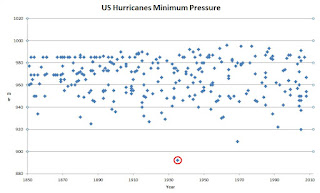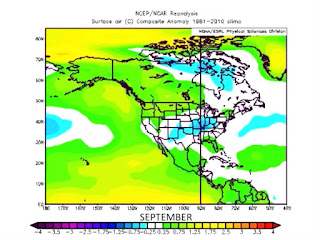Well as promised, it's time to take a look at how
the upcoming winter will unfold. Remember, an outlook, is not really a forecast, it's more of a general
outlook at how things should unfold. This outlook can't tell you which storms
will bring snow/sleet/ or rain. Nor, can it tell you which storms will become
major snowstorms.
Last winter, we saw a very cold 2nd half of winter.
New England into New York State saw above average snowfall, southern New
England saw substantially above average amounts. Well that be the case this
winter?
When I do a winter outlook. I look at many
variables; since these variables interact with each other, it's not easy doing
long range forecasting. I covered Sea
Surface Temperatures (SST) in my preliminary outlook. But I also, look at
things like: Siberian snow cover, Sea Ice, and many other variables in the
pattern, that I compare to similar years
in the past.
The Analog Years:
1957 -1958, 2014-2015,1997-1998,2002-2003,1972-1973,
1919-1920, 1982-1983, 1991,1992, 1994-1995,2009-2010.
The closest analog match with the current El Nino would be 1972- -1973,
1982-1983, and 1997- 1998
But when the other things are factored in.
1957-1958, 1972-1973, and 2014-2015.
OK lets jump into the outlook:
There hasn't been
much change in what I posted in my preliminary outlook.
An El Nino is a major warming in the Eastern
Pacific, El Nino Modoki is a major warming in the Central Pacific. The Pacific
Decadal Oscillation (PDO) and Atlantic Multidecadal Oscillation (AMO) are
measures of SST patterns in the Pacific and Atlantic respectively.
As I said then, the current El Nino has peaked. I showed in the preliminary how the SST's had
started to cool, off the West Coast of South America. This trend has continued,
with the warmest water having shifted away for regions 1 and 2, moving west
into region 3.4. We never saw the
Godzilla El Nino, many were expecting. But it did get very strong.
A look at the current El Nino SST setup.
I'm already hearing noise, on how this year's El
Nino is going to dominate this winter. But, as I've said repeatedly, El Nino is
only one factor out of many, that influence our winter weather in the Northeast
and Mid Atlantic.
PDO:
The Pacific Decadal Oscillation (PDO) ....Those warm
SST off the Pacific Northwest and up into the Gulf of Alaska.
One of the teleconnections that effect our
temperatures is the North Atlantic Oscillation (NAO), when it negative...we can
have cold air in the Northeast. The funny thing about last winter, was the fact
the NAO was mainly positive. As I said above, last winter was very cold. The reason for that was the positive PDO.
Winter of 2014-2015 saw ridging over the West Coast,
and a predominate trough over the Great Lakes and East Coast. This allowed cold Arctic/Siberian air to move
off the ridge, down the trough into the East Coast. The PDO is still strongly positive now.
AMO:
The Atlantic Multidecadal Oscillation will be
another key player this winter.
A lot of people are talking about the so called
"Blue Blob" in the North Atlantic near Greenland. They are using
words like: "unprecedented", "historic", and "unusual" when they talk about
it. But there is nothing strange about it at all. The Atlantic has been in a
positive warm AMO for quite a few years. What we are seeing is the AMO has
turned to the cool negative side of the scale. The AMO like all teleconnections
goes through warm and cool phases. Here is a chart I made, that shows how the
AMO has acted from the past to 2015. You can see the pattern.
The Pacific North American Pattern ( PNA):
When this is in the
positive warm phase...we see above average heights over the west and below
average heights on the East Coast. Here is a diagram that shows how this works.
Snow And Ice Cover:
Siberian Snow Cover:
Snow cover over Siberia is covering a large area,
and it is quickly expanding. When I look back at the analog years....The years
that saw the most Siberian snow...were quite cold in the Northeast.
The ensembles show the snow will keep plying up over Siberia and into
the Canadian Arctic. This will give that positive PDO lots of cold air to work
with.
Eurasia Snow Cover:
Snow Cover in Eurasia, is a little ahead of last
year at this time.
The Arctic sea has stopped its melt, sea ice extent
is now increasing.
Why is snow cover important? A growing snow pack
normally leads to higher pressure in the late fall into early winter. The higher pressures in the mid winter, tends
to promote blocking negative NAO and a negative Arctic Oscillation (AO), which
sends down cold polar air mid to late winter.
The amount of polar blocking will be a major player,
in negating the El Nino. The El Nino winter of 2009-2010 saw a predominate
negative AO, that winter saw severe cold and snow in the Eastern United States, especially the Mid
Atlantic.
I'm seeing a lot of Meteorologist comparing this
year's El Nino, to the one in 1997. They are calling for a mild winter for the
Great Lakes and Northeast. Why are things like the PDO, AMO, NAO, ENSO and all
the others, called teleconnections? The answer is, they are interconnected.
They all have an influence on each other.
I've been saying for months, that this current El
Nino was going to fade going into this winter. And that is certainly the case
right now. I've also been saying for
months, that the current east based El Nino was going to transition to more of
a central based ENSO El Nino (El Nino Modoki)
Here is the current ENSO setup.
Looking back at 1997 you can see the warm SST all
the way to South America.
You can also see the cool SST in the northern
Pacific are close to the coast of North America....this would cause a western
trough. Also 1997 the Atlantic had cool SST off the East Coast. All of this is why the winter of 1997-1998
was so warm in the east.
The Australian:
The Australian shows
the El Nino with most of the warmth in the Central Pacific. This setup
is in line with my thoughts. This would allow for the trough farther out in the
Pacific, which would make for the West Coast ridge I've been referring to when I talk about the
upcoming winter.
The Jamstek:
The Japanese model has been very good this year. The
model predicts that the current El Nino most likely has reached its peak,
keeping its amplitude until winter. The increasing amplitude of the El Nino
Modoki index suggests that the present El Nino most likely will turn to an El
Nino Modoki during the winter into spring 2016. This prediction goes along with
what I've been saying for the last few months.
The CVSv2;
The American CVSv2 has had issues all year. 30 days
ago the model had the ridge even farther east. But as I've said many times the
American models have a eastern bias. Now the model has the ridge over Hudson
Bay. It's very slowly correcting itself by moving the ridge west..... I expect
this trend to continue.
When we
compare the Super El Nino of 1997-1998 and the current strong El Nino. We can
easily see the two global SST patterns look very different.
Back in 1997 the El Nino had very warm SST right up
the South America...this caused a lot of convection to the north over the West
Coast. This lead to a West Coast trough, with an East Coast Ridge. 1997 had a
warm north Atlantic, cold SST off the East Coast, cold SST were much closer to
the Pacific Northwest.
For October 2015 we have everything completely
opposite, a cold northern Atlantic, warm SST off the East Coast, warm SST in
the Gulf of Alaska and off the West Coast... We can also see the Current El
Nino has it's warmest SST closer to the central Pacific.
When everything is factored in this is how the models show this winter turning out.
This is how all the teleconnections correlate. You can see only the El Nino shows a warm winter.
Sunspots:
Solar activity has an impact on winter weather as
well. The IPS figures show numbers gradually falling away from the 2011 and
2014 sunspot peak numbers of around 100 monthly. The current numbers show
around 50-60 spots monthly. The number of sunspots will keep slowly dwindling until
we reach the solar minimum in 2020-2021. So Sunspot activity is very unlikely
to be a major key indicator for the winter of 2015-2016.
Wrapping all of this up...
The reason for doing this type of winter outlook
analysis, is to provide something against which the upcoming winter can be
compared once we get to Spring 2016.
Many meteorologist don't really do analogue-based forecast. Of those who
do, my approach differs quite a bit from those I've seen on the web.
I think we're going to see a chilly overall October
into first week of November. Then toward middle and end of November we're going to see things warm
up into December. The month of December will be quite warm
Winter is going to be slow to start in the Northeast
and Mid Atlantic. But once we get to January. winter will become cold and
snowy. February into March will be much the same, The southern Tier of New York
State, Southern New England, Northern Pennsylvania will be average to below average in
overall temperatures, southern New England down into Pennsylvania will also see above average wintery
precipitation.
For the I-95 Corridor, Southern Pennsylvania, and
the Mid Atlantic, below average temperatures, with well above average
wintertime precipitation.
Central New York and Central New England will see
above average temperatures and below average snowfall.
Far Northern New York, northern Vermont, northern
New Hampshire and Maine (especially northern Maine) will see above well average
temperatures and well below average snowfall.
For this outlook, I'm going to do things a little
different...I'm going to show on the maps, who looks to see what....the numbers
and percentages will be based on what is average for those individual areas. The line A is normal temperatures or snowfall
amounts. the farther you move away from A the more your percentage of normal
changes. I think this will work a lot better than just saying above or below
average.
Temperature:
Precipitation:
The charts should give you a good idea what I expect
for your neck of the woods.
The winter of 2015-2016 isn't going to be like the winter of 1997-1998. Also it won't be like the winter of 2014-2015. The upcoming winter will be quite volatile with wild swings in temperatures all the way through January, February, and March.
Remember I can't tell you how the storms will track. Nor can I tell you if the storms will coincide with the cold outbreaks.
Thank you, for taking the time to read this
outlook. Next Spring we can discuss how
well or how bad my outlook was.

























































